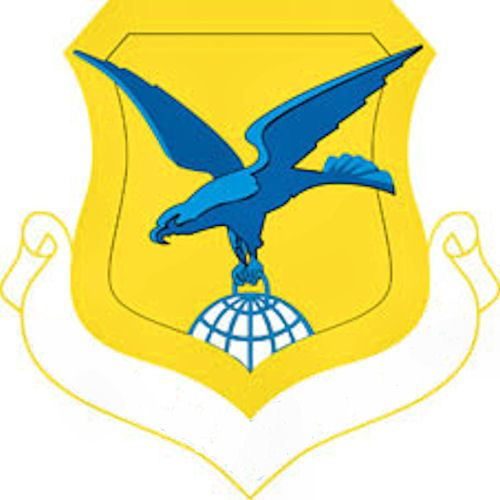Country United States | ||
 | ||
Branch United States Air Force Reserve | ||
The 436th Operations Group is an active United States Air Force unit. It is the flying component of the Eighteenth Air Force 436th Airlift Wing, stationed at Dover Air Force Base, Delaware.
Contents
The unit's World War II predecessor unit, the 436th Troop Carrier Group was a C-47 Skytrain transport unit assigned to Ninth Air Force in Western Europe. The group earned the Distinguished Unit Citation for its first missions 6–7 June, the Normandy Invasion. On subsequent missions the 436th dropped troops and supplies and inserted gliders into Southern France and the Netherlands. In March 1945, the unit was a part of the Allied push across the Rhine and into Germany's heartland. Following the war, the 436th evacuated patients and prisoners of war until it was inactivated in November 1945.
Overview
The 436OG consists of two flying squadrons, the 3d and 9th Airlift Squadrons, and the 436th Operations Support Squadron. It trains on its 18 assigned Lockheed C-5 Galaxy aircraft, known as "the free world's largest airlifter," and two Boeing C-17 Globemaster III aircraft.
History
For additional history and lineage, see 436th Airlift WingWorld War II
The 436th trained for duty in Europe with the Ninth Air Force during 1943. It continued training in England from January–May 1944. The group began combat operations in June 1944 and participated in five major airborne operations by May 1945.
The 436th received a Distinguished Unit Citation for its Operation Neptune missions, which were flown during the Normandy invasion; dropping paratroops of 101st Airborne Division inland from the Utah beachhead early on 6 June; releasing 82nd Airborne Division gliders with reinforcement troops and supplies in the evening of D-Day; and carrying out re-supply drops and glider delivery the following day. The group's aircraft flew supplies into Normandy as soon as suitable landing strips were available, evacuating casualties to England on their return flights. They also picked up undamaged gliders on the coast.
In July 1944, the group deployed 49 aircraft and crews to Italy to take part in the invasion of southern France, Operation Dragoon, releasing gliders carrying 82nd Airborne Division paratroops in the assault area on 15 August. It flew several resupply missions to France and then dropped supplies to Allied forces in Italy.
The deployed element returned to England late in August, and in September the group carried out airborne operations over the Netherlands, dropping paratroops of 101st Airborne Division and releasing gliders with reinforcements of troops and equipment during Operation Market Garden.
At the end of December 1944, the group flew missions during Operation Repulse, the re-supply of Bastogne during the Battle of the Bulge.
It towed gliders to Wesel on 24 March 1945 to provide troops for the airborne assault across the Rhine, Operation Varsity. Further, it carried gasoline to the front lines and evacuated patients, 30–31 March. The 436th also flew transport missions almost daily when not engaged in airborne operations, hauling such things as gasoline, ammunition, medical supplies, rations, clothing, and evacuated the wounded to hospitals in England and France.
After V-E Day, the group continued to evacuate patients and prisoners of war, and flew practice missions with French paratroops before being redeployed to the U.S. and inactivated.
Cold War
Trained primarily with C-47s in the Reserves June 1949 – April 1951, ordered to active service during Korean War and inactivated almost immediately, personnel serving as fillers for other USAF units. Trained again in the Reserves, 1955–1958, being inactivated when parent unit adopted Air Force Tri-Deputate organization.
Modern era
Activated in 1991 when 436 AW implemented the Objective Organization Plan, assigning all operational flying squadrons to Operations Group. Began flying worldwide airlift, including mail and other high priority cargo, aero-medical evacuation, personnel transport, and humanitarian and diplomatic missions.
Served as the only combat-ready C-5 unit capable of airdrop and special operations procedures in support of tactical forces and national objectives. Provided special mortuary airlift missions from Iraq and Afghanistan 2001 to present. Provided strategic global airlift capability for the worldwide support of contingency and emergency war plans required to support Department of Defense objectives. This was expertly demonstrated by its support in airlifting troops, equipment and supplies in response to the 11 September 2001 terrorist attacks.
The 436 OG functions as the "big horses" in the logistics chain for the war on terrorism and is currently playing a major role in aerial resupply for Operations Enduring Freedom and Iraqi Freedom.
